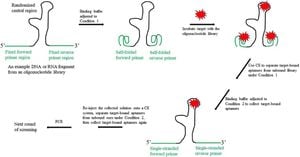A new plant disease detection model named PYOLO improves accuracy and efficiency through innovative feature fusion techniques. This advanced model addresses significant challenges associated with the timely detection of plant diseases, which can severely impact agriculture and ecosystems worldwide.
Timely detection of plant diseases is not just a matter of agricultural productivity; it is also about safeguarding ecosystems from devastating pathogens. A recent study introduces PYOLO, which builds upon the existing YOLOv8n model to significantly improve its capabilities.
Plant diseases, caused by pathogens and abiotic factors, continue to threaten crops globally. Researchers have historically depended on varied methods for detection, ranging from traditional physical and chemical sensors to more advanced machine learning techniques. The latter has gained prominence due to their efficiency and capabilities for large-scale monitoring.
The PYOLO model’s innovation stems from its unique features, including the EC2f and BiFPN mechanisms, aimed at enhancing feature representation across different scales. The team behind this research confirms through various experiments the model’s significant improvements over its predecessor, the YOLOv8n model, which had already been recognized for its strengths.
PYOLO reportedly achieves 4.1% higher mean Average Precision (mAP) compared to YOLOv8n, alongside notable enhancements, including 6.7% improvements in precision and 5.5% increases in recall. One significant aspect of the model involves its EC2f module, which replaces traditional structures with dynamic one-dimensional convolutional layers to reduce background noise interference and improve detection accuracy.
"The EC2f module enhances the traditional SE module by replacing the fully connected layer…,” said researchers. This change enables more refined feature extraction and enhances the model's ability to focus on relevant data.
The MHC2f aspect of the model integrates parallel processing attention, helping the system draw relevant information from various parts of complex images, effectively capturing details previously overlooked. This is especially pertinent when dealing with diseases where symptoms may be obscured by visual noise.
"The model captures important details… effectively capturing important details in complex scenes," noted the researchers, pointing to the PYOLO model's potential to reshape how plant health is monitored.
PYOLO not only demonstrates higher accuracy and efficiency but also sets the stage for future developments among agricultural detection technologies. Its ability to handle diverse disease scenarios through enhanced feature fusion technologies could pave the way for broader applications and enhanced agricultural productivity.
Given the pressure of climate change and the emergence of novel plant pathogens, advancements like the PYOLO model will be invaluable. The findings encourage researchers to continue development, explore optimization techniques, and integrate this model within existing agricultural frameworks.
Future studies aspire to address challenges related to model complexity and broaden the datasets available for training, ensuring the PYOLO model retains its applicability across varied agricultural contexts.



